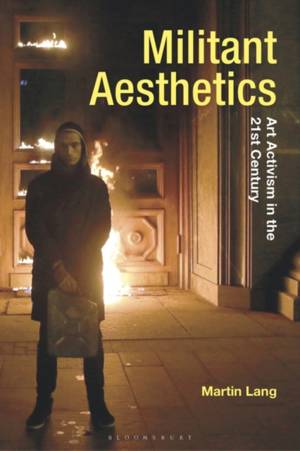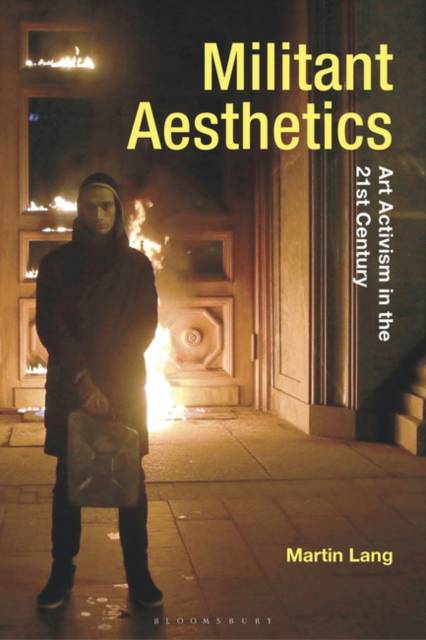
- Retrait gratuit dans votre magasin Club
- 7.000.000 titres dans notre catalogue
- Payer en toute sécurité
- Toujours un magasin près de chez vous
- Retrait gratuit dans votre magasin Club
- 7.000.0000 titres dans notre catalogue
- Payer en toute sécurité
- Toujours un magasin près de chez vous
Description
In 2008 an Iraqi artist was waterboarded as performance art. In 2010 artists upturned police cars in Russia. But what exactly do we mean by militant art and aesthetics? Bringing together the philosophy of art and politics, Martin Lang provides a comprehensive examination of militant art activism: its history, its advocates and the aesthetic theory behind it.
Protest art is not a new concept and yet this book argues that after the terrorist attacks of 9/11 distinctly 21st-century forms of art activism emerged. On the one hand these became militant as artists retained belief in the possibility of radical political change through art. On the other hand, this belief developed in a hostile environment, when anti-terror legislations reclassified activists and artists as terrorists.
Through first-hand interviews and experiences, Militant Aestheticssheds light on numerous international case studies of modern art activism and the different ways they can be classified as militant. Many artists and collectives, including Grupo Etcétera in Buenos Aries, are prepared to break the law and risk arrest for their art. Others like Thomas Bresolin's Militant Training Camp utilise military uniforms in violent performances that connect with public anger, and artists such as Zthoven in the Czech Republic occupy, hack, antagonise and disrupt in increasingly militant ways.
Combining these examples with the pioneering thought of Badiou, Zizek, Rancière and Mouffe, as well as up-to-date scholarship from Bishop, Léger and others, Lang investigates the instances, attributes and rules of militant art in order to introduce a new overall theory of 21st-century militant aesthetics.
Protest art is not a new concept and yet this book argues that after the terrorist attacks of 9/11 distinctly 21st-century forms of art activism emerged. On the one hand these became militant as artists retained belief in the possibility of radical political change through art. On the other hand, this belief developed in a hostile environment, when anti-terror legislations reclassified activists and artists as terrorists.
Through first-hand interviews and experiences, Militant Aestheticssheds light on numerous international case studies of modern art activism and the different ways they can be classified as militant. Many artists and collectives, including Grupo Etcétera in Buenos Aries, are prepared to break the law and risk arrest for their art. Others like Thomas Bresolin's Militant Training Camp utilise military uniforms in violent performances that connect with public anger, and artists such as Zthoven in the Czech Republic occupy, hack, antagonise and disrupt in increasingly militant ways.
Combining these examples with the pioneering thought of Badiou, Zizek, Rancière and Mouffe, as well as up-to-date scholarship from Bishop, Léger and others, Lang investigates the instances, attributes and rules of militant art in order to introduce a new overall theory of 21st-century militant aesthetics.
Spécifications
Parties prenantes
- Auteur(s) :
- Editeur:
Contenu
- Nombre de pages :
- 264
- Langue:
- Anglais
- Collection :
Caractéristiques
- EAN:
- 9781350346741
- Date de parution :
- 08-02-24
- Format:
- Livre relié
- Format numérique:
- Genaaid
- Dimensions :
- 140 mm x 216 mm
- Poids :
- 453 g

Les avis
Nous publions uniquement les avis qui respectent les conditions requises. Consultez nos conditions pour les avis.






